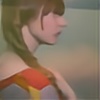HOME | DD
 aka-elle — the witch.
aka-elle — the witch.

Published: 2011-12-21 17:10:39 +0000 UTC; Views: 237; Favourites: 3; Downloads: 3
Redirect to original
Description
Film photo.Shot with a Canon AE-1 usingTri-X 400 black and white film.
Model — my legs
Date — October 30, 2011
aka-elle.com - photography website .
_________________________________________________
find me elsewhere:
tumblr |flickr |twitter |youtube |facebook |formspring
Related content
Comments: 6

This is very nice! (:
I just got a Canon AE-1 myself!
I was wondering if you had any advices to give me before I start my journey with it?
I really want to try out black & white film as well. I see you used a 400, but do you know what the difference is with a 200?
👍: 0 ⏩: 1

Thanks for asking~! I'm not exactly an expert but I'll try my best to help you.
I think the best advice I can give is make sure you're comfortable shooting manual. If need be, you can practice with a DSLR if one is available or do some research on aperture, shutter speed, ISO/ASA/film speed and how they all work together.
After that I'd recommend just getting used to how the camera focuses since its a little different from the way DSLRs focus.
Making sure you know how to load and unload the film properly is very important too.
The numbers 400 and 200 are basically the ISO, so it tells you how sensitive to light the film is. Just like with digital the larger the number is the more grain or noise there will be. That being said, 400 speed film will appear grainier than 200 speed film would. However, the 200 film won't perform as well as the 400 in lower light unless you have a slower shutter speed or wider aperture.
Sorry if that was pretty ramble-y but I hope it helped~! Feel free to ask if you have any more questions.
You can also check out these videos if you want. They're a series of videos explaining how the AE-1 works and what not.
👍: 0 ⏩: 1

I usually work with a Canon 450D so I know some about shooting manual! (: But thank you.
Hm I was thinking about shooting some dark pictures and I am not quite sure if I would like som noise as an effect or not... It's just so hard to tell what it will look like when you don't have the digital frame! But that is also what makes it so exciting! Thank you for explaining a bit for me! (: It was very useful.
There is this one thing I was wondering, not sure if it's stupid or not haha... but for example, in this picture [link] the black/dark is not super-black high contrast, but it has a low level or what I should say... if you understand. It's more dark grey, rather then black. And I love that. Makes it look so soft.
The level of how "black" the dark areas become, does it have something with the setting of the camera to do? Or does it just become like that.
👍: 0 ⏩: 1

That photo might be a bad example since the lower contrast is due to the way I scanned the photo.
In any case, I think to some degree you can control how high or low contrast your photo is just by the choosing a certain subject with the right kind of light or surroundings.
I think it is easier to adjust the contrast when you're making prints though. You can make a print with a higher contrast by using contrast filters. The type of paper you print on can also determine the contrast in the photo. For example, glossy prints tend to be higher contrast than photos printed on paper with a pearl finish.
Does that make sense?
👍: 0 ⏩: 1

Yes it does make sense! Thank you very much.
👍: 0 ⏩: 1

















